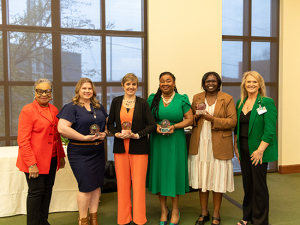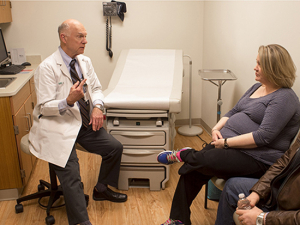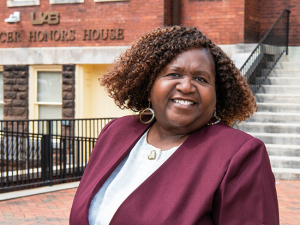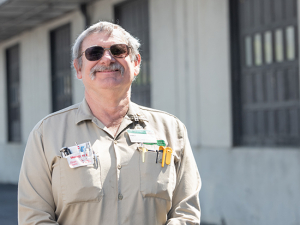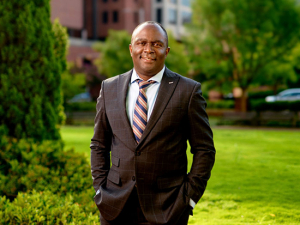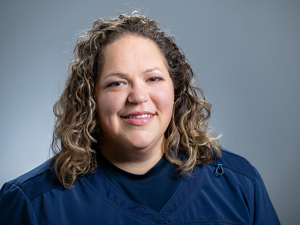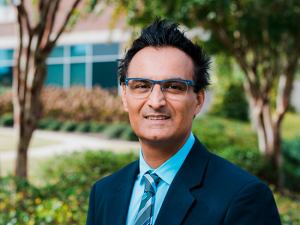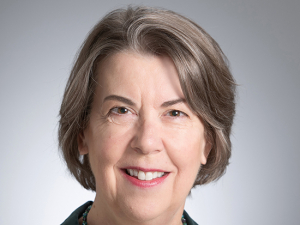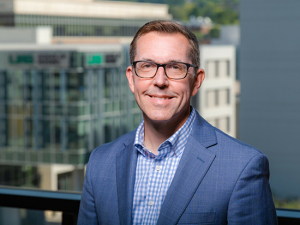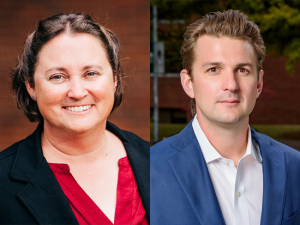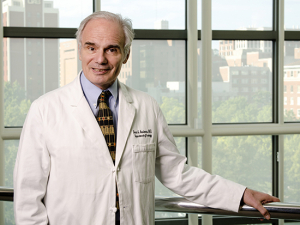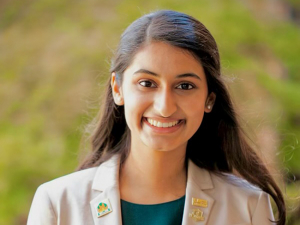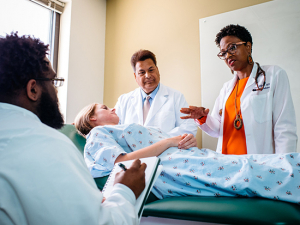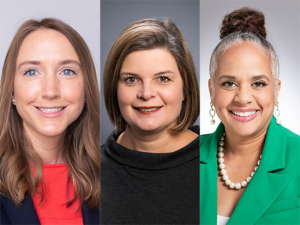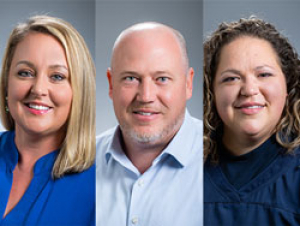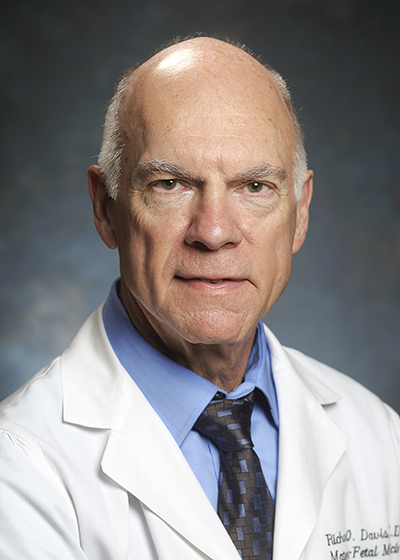 Richard Davis, M.D., professor in the Division of Maternal-Fetal MedicineRichard Davis, M.D., can count on one hand the number of places he’s practiced medicine — in fact, just on one finger.
Richard Davis, M.D., professor in the Division of Maternal-Fetal MedicineRichard Davis, M.D., can count on one hand the number of places he’s practiced medicine — in fact, just on one finger.
Davis joined UAB in July 1973 as a resident — then called interns, he says — in the Department of Obstetrics and Gynecology, where he’s stayed for 45 years. This week, Davis, now a professor in the Division of Maternal-Fetal Medicine, will be honored for those four-and-a-half decades of service to UAB.
One other will be honored for 45 years of service — Sally Whitley from the Department of Pediatrics — and six will be honored for 40, including Donna Andrews, program manager in the University Honors program; Harriet Amos Doss, Ph.D., associate professor of history; James Jordan, instrument and control tech in Building Automation and Controls; Michael Loop, Ph.D., associate professor in the Department of Optometry and Vision Science; Anthony Schimizzi, associate professor and cataloguing librarian in UAB Libraries’ Library Technology and Technical Services department; and Johnny Scott, M.D., professor of radiology.
A list of others being honored for 20 or more years of service also is online.
Many opportunities for Davis
His initial plan was to wrap up his residency and go into private practice, Davis said, but he never found a practice he truly liked as much as working at UAB, where he had the opportunity to work as both a clinician and academician.
“It’s been a really balanced career where I’ve gotten to do some research and lots of clinical work,” Davis said. “Factoring in the whole package of academic medicine, I really liked it here.”
The clinical work is always what has interested him the most, he says — in part because UAB sees so many interesting and complex cases.
“It keeps you on your toes,” he said.
|
"It’s been an interesting transformation how pregnant women are able to be taken care of and how quickly we can find problems.” |
When the Department of Obstetrics and Gynecology’s first chair, Charles Flowers Jr., M.D., hired Davis onto faculty, the UAB campus was home to many prominent figures in UAB’s history, such as cardiothoracic surgeon John Kirklin, M.D., for whom The Kirklin Clinic is named, and second UAB President S. Richardson Hill, M.D., from whom the Hill Student Center gets its name.
The clinic spaces in the department were smaller than they are today, Davis says, and more scattered. The old labor and delivery unit was located on the fifth floor of Jefferson Tower, he said, and it only had six or seven delivery rooms, compared to the 17 in the new Women & Infants Center, opened in 2010.
“It’s been interesting to watch UAB grow,” he continued. “Back in those days, ultrasounds were hardly used at all. Now you can hardly do anything in obstetrics without an ultrasound machine. It’s been an interesting transformation how pregnant women are able to be taken care of and how quickly we can find problems.”
A growing university
UAB’s facilities aren’t the only thing that have grown since Davis set foot on campus in the 1970s — he says UAB’s reputation as a world-class institution has done nothing but flourish, noting that pioneers such as Kirklin and first Department of Medicine Chair Tinsley Harrison, M.D., laid the groundwork for UAB’s current success.
|
“The reputation of UAB has, in the last 15-20 years, been really phenomenal. Our academic reputation has grown quite a bit,” Davis said. “This has always been a strong clinical place. A lot of the first clinicians like Kirklin and Harrison were giants who laid a foundation.” |
“The reputation of UAB has, in the last 15-20 years, been really phenomenal. Our academic reputation has grown quite a bit,” Davis said. “This has always been a strong clinical place. A lot of the first clinicians like Kirklin and Harrison were giants who laid a foundation.”
Flowers, Davis’ first chair and his main mentor, had a strong personality and expected much of the young Davis, who says chief residents at that time were treated more like junior faculty than trainees. But today’s residents have even “more to deal with” now in his day, he says; For example, cesarean-section delivery rates are up to about 30 percent now compared to 5-6 percent when Davis was beginning his career, and clinicians now have electronic medical records and duty hours.
Now, Davis focuses his attention on a career well-served; he enjoys the camaraderie within his department and division, and says he enjoys seeing the people around him learn and grow.
“When you walk through the halls here, people will thank you for taking care of them and say, ‘Remember when you delivered me?’” he recollected. “One of the biggest shocks you can have is when you’ve delivered a new baby and you figure out from the grandmother you actually delivered the new mother years ago, too.”
